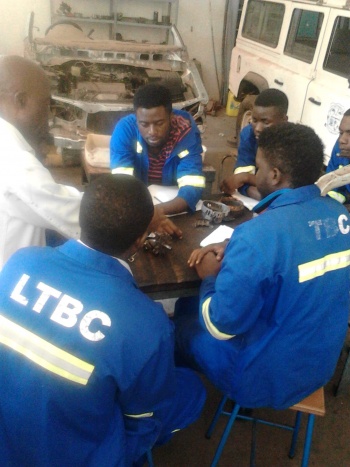CTVSD1/Resources/Instruction
Understanding and applying instructional principles is instrumental to designing effective training The15 principles they suggest and grouped into 5 key groups are presented below. You can access the full article here.
1. Organize content One of the key elements to effective instruction is organizing content in ways that are meaningful and helpful to learners with clear objectives and connection to current or future work. Learning events need to be organized logically, with minimized irrelevant details, to reduce cognitive load. For example, graphics or images that illustrate key concepts can be placed next to the text explaining the concept.
- Organization is needed to plan and develop introductory (pre training) materials to provide the learner with a structure or examples of what is to be learned.
- Coherence makes the main points prominent and easy to discern in course materials. Ensure essential ideas and skills to be learned are well-connected.
- Contiguity is about presenting knowledge, principles, and ideas in a way that they are closely associated in space and time. Use short pretraining video demonstrating the behaviour to be trained. Provide cues in the form of outlines, diagrams, and concept maps, and checklists to support learning.
2. Optimize sequencing of material A second key element is optimizing the sequencing of training instruction and content. Present content relevant to the learner’s level of expertise, ensuring that learners master requisite knowledge before attempting complex skills. Provide learning support for more difficult content. Order learning tasks in increasing difficulty, and, when appropriate, deconstruct the learning of complex tasks or skills before combining them. For example, early in technical training, technical terms might be paired with images or visual cues, but the cues are removed as learners develop their technical vocabulary.
- Scaffolding provides learner assistance in the early phases of instruction to help focus attention. Start with the simple aspects of the task and then build in task complexity. Provide expert advice and support that reduces over time. Design into the plan of instruction appropriate support mechanisms by anticipating learner needs.
- Adaptive difficulty is allocating the optimal time for mastery for each skill and increase the level of task difficulty over the time of the instruction based on mastery of earlier phases. If the learner’s performance is below expectations reduce task difficulty, whereas if performance is above expectations you can increase task difficulty if appropriate.
- Interleaving is about implementing a practice schedule that mixes different kinds of problems or training content. For example, alternate practising of wood cutting with wood sanding and interpreting technical drawings. Have learners alternate practice solving technical and interpersonal problems.
3. Engage learner in own learning Encouraging deliberate practice is important aspect of learner engagement and learning. The more the instruction actively engages learners in the learning event, the better the outcomes. Engagement means more than interest. It takes the form of the learner responding to and acting on training content by restating, reflecting, generating answers or explanations, consciously monitoring and observing, evaluating their practice and progress toward learning goals. Prompting learners to generate their own personal examples of a concept defined by the instructor helps them integrate the new concept with their existing knowledge, making it easier to retain and access when needed.
- Generative effects help learners integrate and elaborate on new knowledge by making personal connections between the new knowledge and the existing knowledge they have. For example, ask learners to explain or demonstrate a concept or skill to others.
- Prompts/ metacognition facilitate the self-regulation of learning by the learner through questioning of learning strategies. Have learners provide self-explanations that connect the new material to what they already know.
- Retrieval (aka the testing effect) is when learners are asked to recall information that is consolidated in long-term memory. Frequent repeated testing on concepts while in training helps with that.
4. Conduct effective practice Effective practice leads to the acquisition of new knowledge or skills by requiring attention, rehearsal, and repetition. Research indicates that learning and retention can be improved when learners: encounter practice conditions similar to performance conditions, are exposed to problems or conditions that vary, and practice trials are distributed over time.
- Variability of practice ensures learners have opportunities to apply skills across different tasks, people, and job-relevant situations.
- Spaced practice is implementing a training or practice schedule in which learning events are spread over time allowing learners to assimilate and internalize new knowledge and practice. Instead of giving carpentry trainees one day of training to learn 4 different machine operations they can be given 2 hours of training each day followed up by practice time for four days.
- Identical elements provide learners with job-relevant tasks with events unfolding in a realistic manner. Place learner in situations that incorporate what it feels like (time pressures, challenges) when completing the task on the job. Mirror the collaborative nature for tasks on the job.
5. Develop past initial mastery Initial mastery does not always ensure subsequent levels of performance. Instruction is more often than not necessary to facilitate development past initial mastery. Continued repetition leads to overlearning, but greater mastery also results from reinforcement that knowledge and skills are correct. Constructive feedback of how to refine further knowledge or skills contribute to that.
- Knowledge of results whether a response is correct or incorrect as well as what the correct response is facilitate development past initial mastery. An example is sequencing instruction, so the learner is only able to go forward in a lesson or a task if they provide the correct answer.
- Feedback and feedforward information to the learner to modify his or her thinking or behaviour for the purpose of improving learning. Identify and possibly correct inaccurate skills, misconceptions, and missing Information when learners are practicing and applying new knowledge and skills.
- Overlearning is a continued practice on a task after some criterion of mastery on that task has been achieved. Repeated practice.
